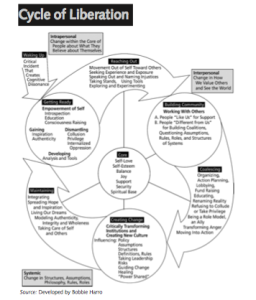“We need you” was the message going in — “we” being them, “you” being us. They need us because by their own admission they understand workstreams, not content. They have a sense of how things move and at what speeds but not of the particular things/parts to be put in motion. That’s our job, evidently, to build the raft and people it so they can steer the whole party downriver before winter sets in. Cold, frightful weather at our backs. A warm budding spring downstream.
From the beginning it’s been a battle over concepts, framework and the ownership of ideas. They dropped a time bomb in the middle of the conference room and it was all we could do to pluck madly at the wires before the whole thing went kablooey. We rallied the troops and after a rushed 3-week in-house R&D workshop we had a working MODEL. That model went on the smart board yesterday, and I’m hear to report that everything (surprisingly) went well, but with a catch.
Consider the forces — neatly dualistic — at work here: We see ourselves as the new traditionalists working desperately to defend an old idea. We see the other side as rash, impetuous, short-sighted. Conversely, they position themselves as radical futurists on the cutting edge of institutional and programmatic progress. They see us as stale, stuck-in-the-mud obstructionists, afraid of change, mired in habit. Driving it all is an unchecked operational momentum — that vague force behind any reform movement that pushes people into ‘streams’ of action without anyone really truly understanding where they’re headed. This momentum is a kind of slow, persistent churn, a multifaceted gesturing toward structural reinvention. That anything actually changes in the end is kind of beside the point.
So they liked our model and said so. But, they noted toward the end of our presentation, there’s something missing. Missing? we asked. We want you to consider adding this piece. We considered adding that piece, we countered, and decided it was a bad idea. In fact, we can prove (from our research) that it’s a bad idea. But if you look at it this way, they said. And so on. We agreed to reconsider, and the cynical among us think we may have cooked our own goose in so doing.
Operational momentum is always about adding pieces to a puzzle with no clearly discernible shape or edge. When operational momentum is the driving force, any counter-pressure from without — any attempt to slow that momentum (with research, with reasoned debate, experimentation, program pilots and what not) — is dismissed as a threat to whatever oblique future they keep dreaming about.
We seem to be living in separate worlds governed by different laws of motion. For them nothing exists beyond operational momentum. Which is why ‘work’ is now a ‘stream’ and doing is a perpetual striving.
